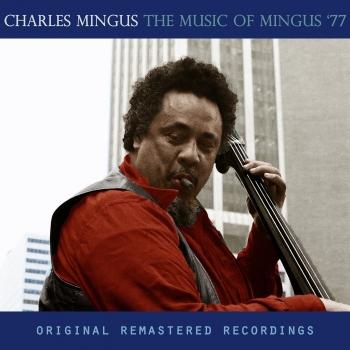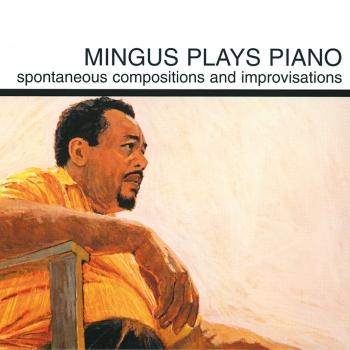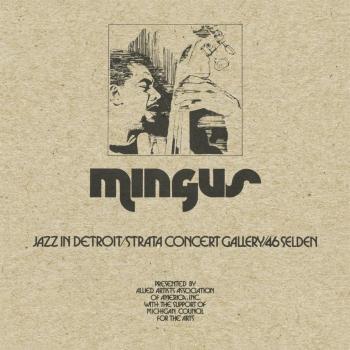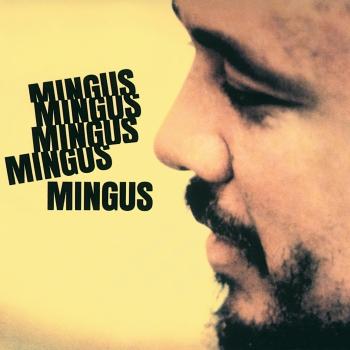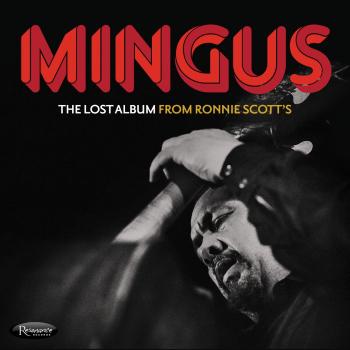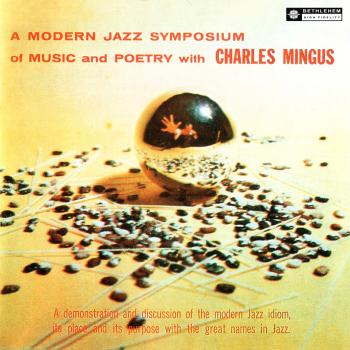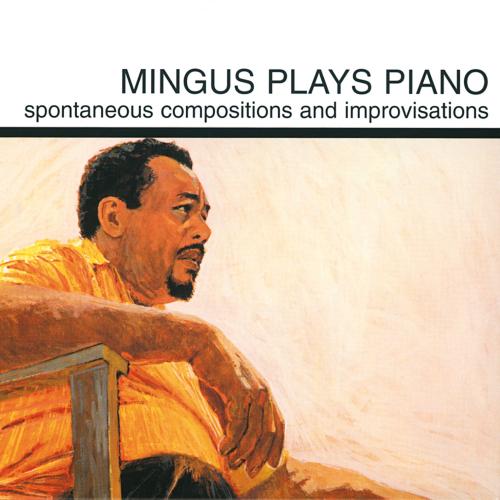
Mingus Plays Piano (Spontaneous Compositions And Improvisations - Remastered) Charles Mingus
Album info
Album-Release:
1963
HRA-Release:
08.09.2017
Album including Album cover
I`m sorry!
Dear HIGHRESAUDIO Visitor,
due to territorial constraints and also different releases dates in each country you currently can`t purchase this album. We are updating our release dates twice a week. So, please feel free to check from time-to-time, if the album is available for your country.
We suggest, that you bookmark the album and use our Short List function.
Thank you for your understanding and patience.
Yours sincerely, HIGHRESAUDIO
- 1 Myself When I Am Real 07:33
- 2 I Can't Get Started 03:40
- 3 Body And Soul 04:30
- 4 Roland Kirk's Message 02:39
- 5 Memories Of You 04:33
- 6 She's Just Miss Popular Hybrid 03:08
- 7 Orange Was The Color Of Her Dress, Then Silk Blues 04:14
- 8 Meditations For Moses 03:38
- 9 Old Portrait 03:45
- 10 I'm Getting Sentimental Over You 03:43
Info for Mingus Plays Piano (Spontaneous Compositions And Improvisations - Remastered)
Bassist and composer Charles Mingus is one of the most radical figures in American music. Throughout the '50s, he worked as a sideman with legendary players Charlie Parker, Dizzy Gillespie and more. In the '60s, he gained recognition as a bandleader, often followed by controversy for making strong-minded statements in the press about race, politics and stodgy music critics. While Mingus received many honors posthumously as well as during his career, perhaps his greatest achievement was transcending the restrictive label of jazz.
„Mingus Plays Piano“, released just a few months after his masterpiece The Black Saint And The Sinner Lady, is the only record to feature Mingus performing on his instrument of choice for composing. From the opening track, appropriately titled "Myself When I Am Real," Mingus shrugs off any virtuosic pretensions of solo albums and stakes out more introspective territory. These trance-like, poetic musings reveal a tenderness rarely associated with Mingus, reminiscent of Erik Satie's piano works and Art Tatum's free rhythmic style.
„Mingus Plays Piano is one of the most beautiful recordings, period. It is a on its own terms perhaps a more personal statement than even the masterpiece The Black Saint and the Sinner Lady. While indulging in absolutely none of the ear-straining superficial ugliness of much of the “new jazz” music of the period, it manages to attain to the personal exposure and honesty to which many New Thing-ers aspired. Anything by Mingus is worth hearing; Mingus Plays Piano should be in the first rank — so far from a mere novelty as to be one of this great artist’s finest hours.“ (AllAboutJazz)
„This album is unique in Mingus' enormous catalog. As the title indicates, the famous bassist takes to the ivories solo to give life to his dazzling improvisational art. At first it seems odd to hear Mingus without one of his trademark interactive and exploratory ensembles. But the sensibility that he brings to this collection of piano pieces bears all the signs of the composer's genius. In the first piece, "Myself When I Am Real," turbulence and aching beauty merge in Mingus' spontaneous unfolding of phrases. Such standards as "Body and Soul" and "Memories of You" are given personal, harmonically intriguing readings that blend in seamlessly with a Mingus original like "Old Portrait." In many ways, it is a treat to hear the artist working in this pared-down, quieter atmosphere, as it allows one to concentrate more intently upon the range and compositional brilliance of this incomparable figure.“ (AMG)
Charles Mingus, piano, vocals
Recorded July 30, 1963 at RCA Studios, New York
Produced by Bob Thiele
Digitally remastered
Charles Mingus
One of the most important figures in twentieth century American music, Charles Mingus was a virtuoso bass player, accomplished pianist, bandleader and composer. Born on a military base in Nogales, Arizona in 1922 and raised in Watts, California, his earliest musical influences came from the church– choir and group singing– and from “hearing Duke Ellington over the radio when [he] was eight years old.” He studied double bass and composition in a formal way (five years with H. Rheinshagen, principal bassist of the New York Philharmonic, and compositional techniques with the legendary Lloyd Reese) while absorbing vernacular music from the great jazz masters, first-hand. His early professional experience, in the 40′s, found him touring with bands like Louis Armstrong, Kid Ory and Lionel Hampton.
Eventually he settled in New York where he played and recorded with the leading musicians of the 1950′s– Charlie Parker, Miles Davis, Bud Powell, Art Tatum and Duke Ellington himself. One of the few bassists to do so, Mingus quickly developed as a leader of musicians. He was also an accomplished pianist who could have made a career playing that instrument. By the mid-50′s he had formed his own publishing and recording companies to protect and document his growing repertoire of original music. He also founded the “Jazz Workshop,” a group which enabled young composers to have their new works performed in concert and on recordings.
Mingus soon found himself at the forefront of the avant-garde. His recordings bear witness to the extraordinarily creative body of work that followed. They include: Pithecanthropus Erectus, The Clown, Tijuana Moods, Mingus Dynasty, Mingus Ah Um, The Black Saint and the Sinner Lady, Cumbia and Jazz Fusion, Let My Children Hear Music. He recorded over a hundred albums and wrote over three hundred scores.
Although he wrote his first concert piece, “Half-Mast Inhibition,” when he was seventeen years old, it was not recorded until twenty years later by a 22-piece orchestra with Gunther Schuller conducting. It was the presentation of “Revelations” which combined jazz and classical idioms, at the 1955 Brandeis Festival of the Creative Arts, that established him as one of the foremost jazz composers of his day.
In 1971 Mingus was awarded the Slee Chair of Music and spent a semester teaching composition at the State University of New York at Buffalo. In the same year his autobiography, Beneath the Underdog, was published by Knopf. In 1972 it appeared in a Bantam paperback and was reissued after his death, in 1980, by Viking/Penguin and again by Pantheon Books, in 1991. In 1972 he also re-signed with Columbia Records. His music was performed frequently by ballet companies, and Alvin Ailey choreographed an hour program called “The Mingus Dances” during a 1972 collaboration with the Robert Joffrey Ballet Company.
He toured extensively throughout Europe, Japan, Canada, South America and the United States until the end of 1977 when he was diagnosed as having a rare nerve disease, Amyotropic Lateral Sclerosis. He was confined to a wheelchair, and although he was no longer able to write music on paper or compose at the piano, his last works were sung into a tape recorder.
From the 1960′s until his death in 1979 at age 56, Mingus remained in the forefront of American music. When asked to comment on his accomplishments, Mingus said that his abilities as a bassist were the result of hard work but that his talent for composition came from God.
Mingus received grants from the National Endowment for the Arts, The Smithsonian Institute, and the Guggenheim Foundation (two grants). He also received an honorary degree from Brandeis and an award from Yale University. At a memorial following Mingus’ death, Steve Schlesinger of the Guggenheim Foundation commented that Mingus was one of the few artists who received two grants and added: “I look forward to the day when we can transcend labels like jazz and acknowledge Charles Mingus as the major American composer that he is.” The New Yorker wrote: “For sheer melodic and rhythmic and structural originality, his compositions may equal anything written in western music in the twentieth century.”
He died in Mexico on January 5, 1979, and his wife, Sue Graham Mingus, scattered his ashes in the Ganges River in India. Both New York City and Washington, D.C. honored him posthumously with a “Charles Mingus Day.” (Source: www.mingusmingusmingus.com)
This album contains no booklet.









